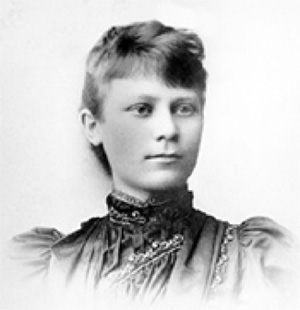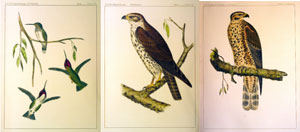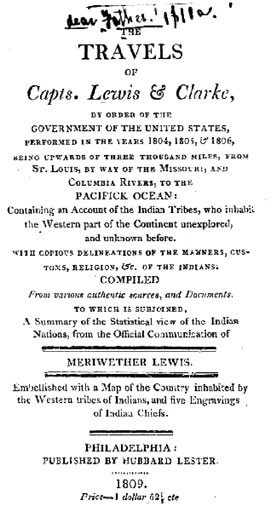Exploring the Explorers: Government-Sponsored Expeditions in the 19th Century
The nineteenth century was the last great age of exploration on the earth. …American exploration, in particular federally sponsored exploration, began in the nineteenth century at an advanced level as the beneficiary of the developments in the arts and science of exploration of proceeding centuries, but developed some special characteristics of its own.
– Spy Out the Land [1]
In the 19th-century, the United States government spearheaded hundreds of exploring expeditions throughout America and around the world. To record the many works published about those trips, Adelaide R. Hasse—the first Superintendent of Documents librarian—compiled Reports of Explorations Printed in the Documents of the United States Government [2] in 1899. This bibliography is not only a "who's who" of 19th-century explorers but also a travel guide to the many places the government sent these expeditions, including the Amazon, the Arctic, Japan, Mexico, Mississippi River, Yellowstone and many other locations. This article will provide tips on finding a few of the fascinating works cited by Hasse and published in the U.S. Congressional Serial Set, 1817-1980 and other Archive of Americana collections.

Adelaide R. Hasse (1868-1953) Superintendent
of Documents Librarian (1895-1897)
A subject search for "Discovery and Exploration" in Readex's digital edition of the U.S. Congressional Serial Set, 1817-1980 retrieves over 700 publications. This results list includes the final reports of various expeditions and the various House and Senate publications that deal with the authorization of expeditions, allocation of funds and the approval to print these publications. To the right of the results list, the Serial Set's thesaurus displays "Topics related to discovery and exploration," including such Subject terms as Explorers, Trade Routes, Maps and Geography and several related Act Names.
Clicking on "more…" under Subjects provides links to the titles of publications on specific expeditions. Four of the first five items are reports of the monumental expeditions, led by Clarence King, John Wesley Powell, George M. Wheeler and Ferdinand V. Hayden, that were the predecessors to today's U.S. Geological Survey. One of Hayden's many reports provided the first map of what is now Yellowstone National Park.

First map showing the boundaries of Yellowstone
National Park Preliminary Report of the United States
Geological Survey of Montana and Portions of Adjacent Territories.
(H.Ex.Doc. 326; 42nd Cong., 2nd Sess. (Serial Set Volume 1520)
An alternative approach to finding works indexed under the "Discovery and Exploration" subject heading is to select "Science and Technology" under the Browse Tab. Search results are the same, but now one can "Browse within discovery and exploration" among hundreds of related terms. Selecting "Pacific railroad surveys (1853-1856)" provides access to the House and Senate versions of the multi-volume survey titled "Reports of explorations and surveys, to ascertain the most practicable and economical route for a railroad from the Mississippi River to the Pacific Ocean." In addition to G. K. Warren's monumental "Map of the Territory of the United States from the Mississippi to the Pacific Ocean" and many other important items, these volumes include incredible color lithographs:

Photo-quality lithographs from part 10 of the Pacific Railroad Survey
(S.Ex.Doc. 78, pt. 10; 33rd Cong.; 2nd Sess.; Serial Set Volume 767)
Other publications retrieved by these search results provide information on the size of the government's expenditures for such expeditions. Surprisingly, while "the amount of the appropriation for explorations and surveys, to ascertain the best route for a railroad from the Mississippi River to the Pacific Ocean, was $150,000," the cost to print the report on the survey reports was $500,000! [3]
The first and probably most famous U.S. expedition was Meriwether Lewis and William Clark's Corps of Discovery. In American State Papers, 1789-1838, a subject search for the "Lewis and Clark Expedition" returns three results. One is the publication, "Lewis and Clarke's Expedition," which contains Lewis's report, "A Statistical View of the Indian Nations Inhabiting the Territory of Louisiana." [4] The same subject search for the "Lewis and Clark Expedition" in the U.S. Congressional Serial Set, 1817-1980 returns 10 items. These items deal with relief bills for members of the expedition, the Lewis and Clark Centennial Exposition and more.
Although their final report was not published by the U.S. government and thus doesn't appear in either the U.S. Congressional Serial Set, 1817-1980 or its predecessor American State Papers, 1789-1838, Lewis and Clark's most widely known publication can be found elsewhere in the Archive of Americana. The "Lewis and Clark Expedition" search in Early American Imprints, Series II: Shaw-Shoemaker, 1801-1819 returns 16 items, including reports by two members of the expedition, William Dunbar and Patrick Gass; an early 1809 publication on the expedition; and other valuable works. When Early American Imprints, Series II is completed this year, this search will also deliver the final two-volume report, written by Meriwether Lewis and published in 1814 (Shaw-Shoemaker Entry number 31924).

Title page from The Travels of Capts. Lewis & Clarke.
Early American Imprints, Series II, 1801-1819.
Shaw-Shoemaker entry number 18775
America's Historical Newspapers, 1690-1922 returns varied and plentiful articles on Lewis and Clark. A full-text search for "Lewis near2 clark and (report or journal or expedition)" with the date range limited to 1800-1810, retrieves 160 newspaper results. To find classified ads for Lewis' two-volume report, one can search "Lewis and Clark" in full text, limit the date to 1814 and limited the article type to advertisements.

A classified ad from the March 7, 1814
Commercial Advertiser, published in New York City.
In short, the 19th century was the golden age of expeditions sponsored by the U.S. government, and the digital Archive of Americana can be a uniquely valuable tool for both students and scholars seeking to explore their extraordinary discoveries today.
[1] Spy Out the Land: An Exhibition on the United States Exploring Expeditions of the Nineteenth Century. Brown University Library, October 5 – November 4, 1983; Tufts University Library, November 16 – December 16, 1983. pp. 2, 4.
[2] The University of Minnestota digitized Hasse's bibliography. It can be found at http://www.lib.umn.edu/govpubs
[3] S.Exec.Doc. 29 and H.Exec.Doc. 46; 33rd Cong., 1st Sess. both report on page 2, "The amount of the appropriation for explorations and surveys, to ascertain the best route for a railroad from the Mississippi River to the Pacific Ocean, was $150,000. Steve Daniel in his presentation, "The Transcontinental Railroad Then and Now: The U.S. Congressional Serial Set," at the Third Readex Digital Institute, (October 2005) reported that the cost to print the survey reports was $500,000!
[4] Lewis and Clarke's Expedition. Communicated to Congress, February 19, 1806. American State Papers. Document Class 7, Indian Affairs. 9th Cong.; 1st Sess., publication no. 113.




